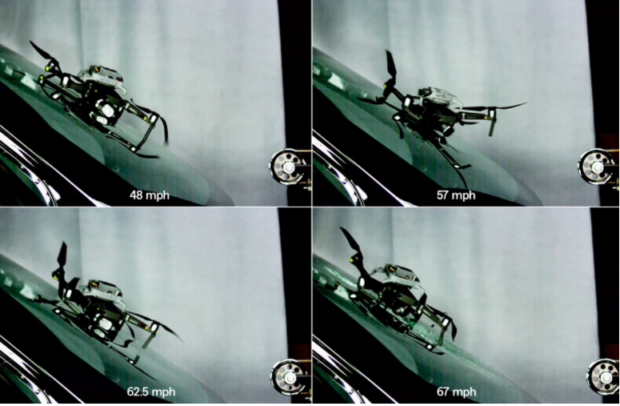New Federal Aviation Administration rules are expected to clear the way for expanded commercial use of drones, which are increasingly being used by insurers to assess property damage.
The updated Operations Over People rules, which took effect on April 21, allow certified commercial drone pilots to fly over people and moving vehicles while in transit and at night, subject to certain conditions. Drones must weigh less than 250 grams (0.55 pounds) and cannot contain rotating parts that can lacerate human skin.
The rules allow heavier drones to fly over people and vehicles if the operator can demonstrate to the FAA that their drones conform with performance standards, showing that they have mitigated the risk of harming people if they fall. The agency said it intends to release performance standards in the next nine to 12 months.
State Farm got a jump on the new rules when the FAA in late 2020 issued a waiver allowing the insurance carrier to fly its drones over roadways. State Farm spokesman Dave Phillips said the company has been using drones since 2015, primarily to assess damage after catastrophes and for roof inspections.
He said FAA rules that prohibit flying over roadways decreased efficiency.
“We would have to land it and literally pick it up and carry it across the street,” he said. “It just wasn’t making any sense.”
State Farm persuaded the FAA to issue a rules waiver after working with Virginia Tech to demonstrate that drones will not crash through windshields at normal traffic speeds. Researchers flew a small, parachute-equipped drone into a salvaged automobile windshield at varying speeds. No damage was done until the speed of the vehicle reached 67 mph.
“The slim margin between a virtually pristine windshield and a destroyed one drew a clear boundary around low-risk scenarios,” State Farm said in a press release. “The data showed that as long as potential relative impact speeds never exceeded 62 mph, flights over moving vehicles presented minimal risk.”
No waiver will be required for the smallest drones under the updated rules that took effect last week, but operators of drones than weigh more than 250 grams will have to wait for the FAA to develop performance measures and then demonstrate that their drones are safe.
“So realistically, there will be some period of time before operators will really be able to leverage the rule,” Eleanor Nelsen, director of communications for Virginia Tech’s Institute for Critical Technology and Applied Science, said in an email.
“More broadly, though, our perspective is that having a quantitative understanding of an operation’s potential risks is always valuable for determining how to conduct that operation as safely as possible,” she said. “Building a safety case for a particular waiver was the original motivation for the research, but to us, the most significant outcome of it are new test methods for rigorously evaluating impact risk.”
The FAA rules allow operators to fly over people and roads but only incidentally while in transit. Sustained flight over a road is not allowed. Similarly, sustained flight over congregations of people is not allowed unless specific conditions are met, including a remote identification device that sends an electronic signal, similar to an aircraft transponder.
The FAA website shows that Chubb Insurance and Auto-Owners Insurance have also obtained rule waivers, both to allow nighttime drone operations.
About the photo: Virginia Tech studied the impact of a drone striking a vehicle windshield at various speeds. Photo courtesy of State Farm and Virginia Tech.
*This story ran previously in our sister publication Claims Journal.





















 Five AI Trends Reshaping Insurance in 2026
Five AI Trends Reshaping Insurance in 2026  California Workers Comp Combined Ratio for 2024 Highest in 20-Plus Years
California Workers Comp Combined Ratio for 2024 Highest in 20-Plus Years  Surge of Supercharged Hurricanes Prompt Call for Cat 6 Classification
Surge of Supercharged Hurricanes Prompt Call for Cat 6 Classification  Is the AI Boom a Bubble Waiting to Pop? Here’s What History Says
Is the AI Boom a Bubble Waiting to Pop? Here’s What History Says 




